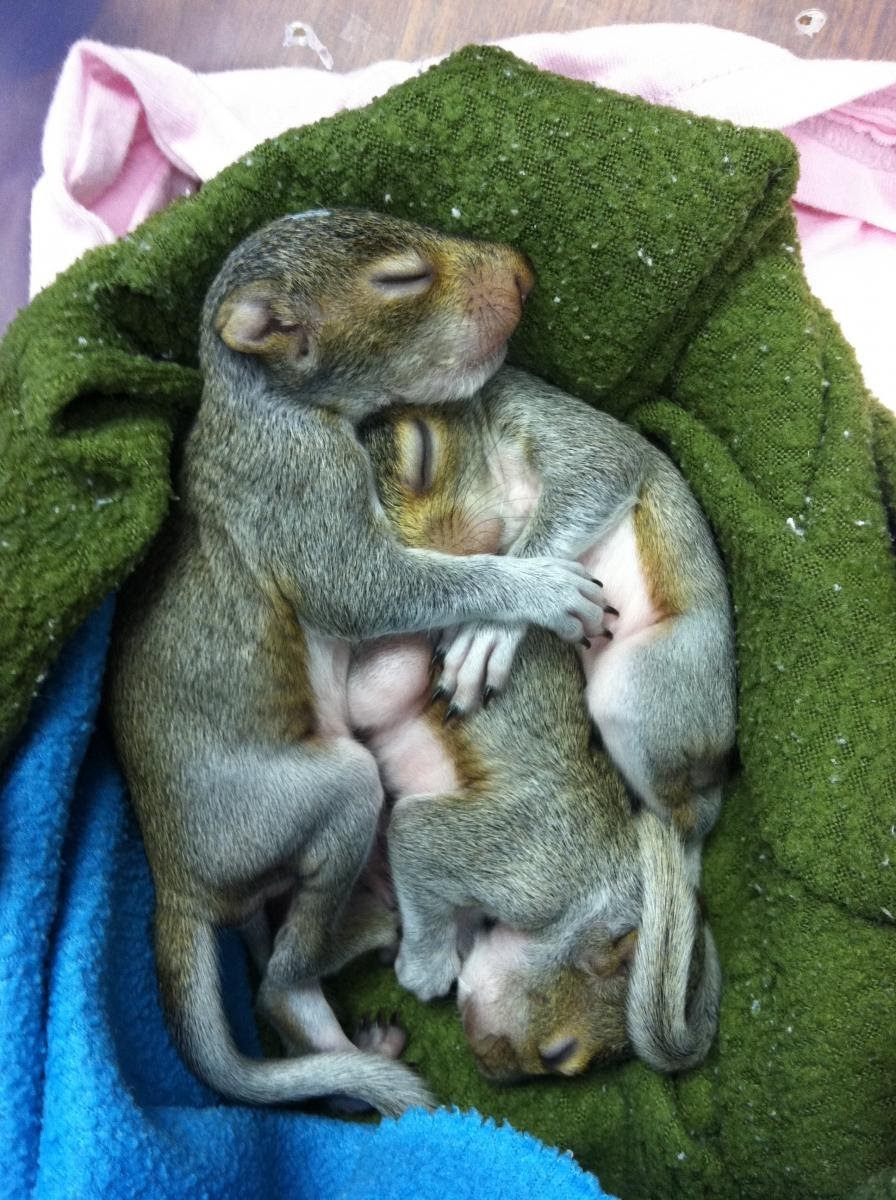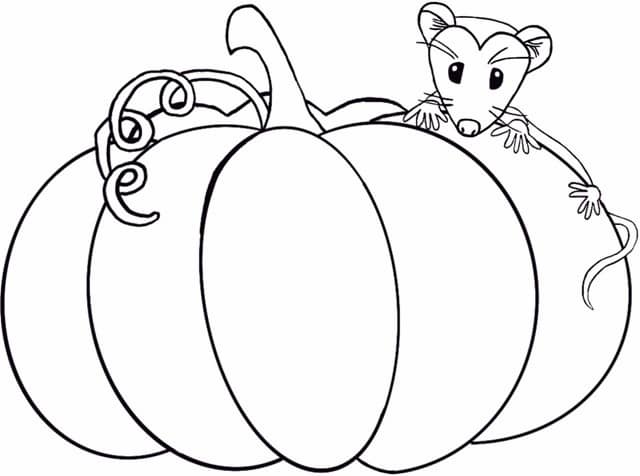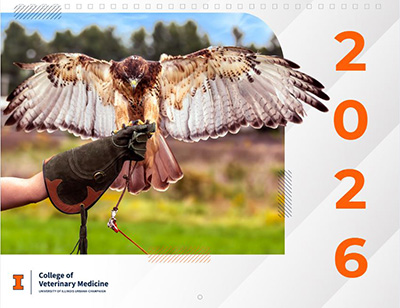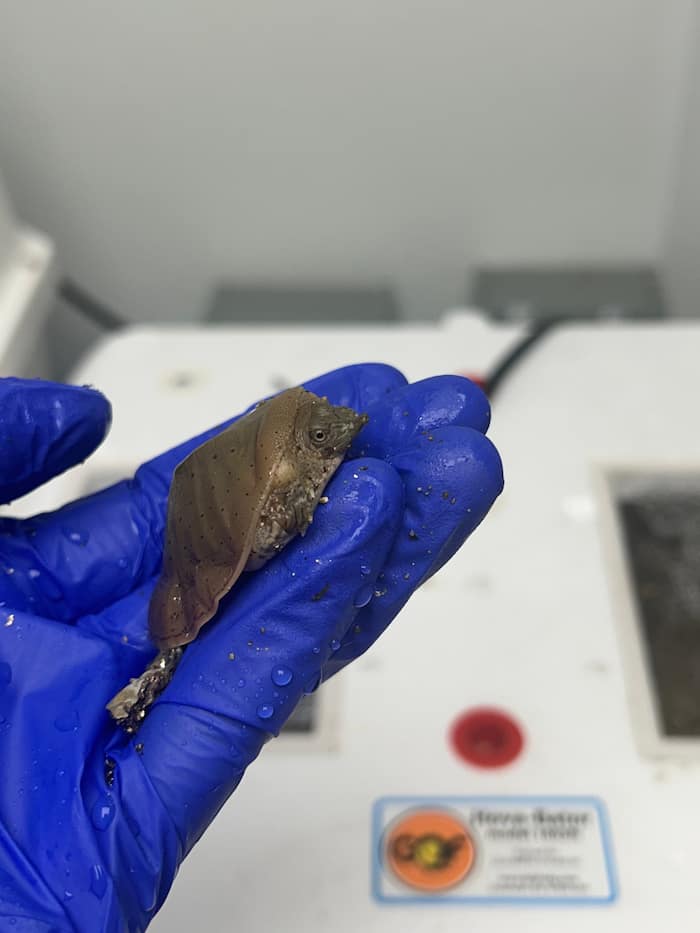The Wildlife Medical Clinic is typically bustling with baby animals each spring. Sometimes these animals never actually needed to be rescued, however. You can help with that! By being able to tell which babies are safe with mom in their nest and which need our care, you can be their best advocates. Thanks to our knowledgeable community members – like you! – we are able to keep as many baby animals in the wild with their parents, giving them the best chances possible for a long and healthy life.
Take this quiz to make sure you feel ready for the spring rush!
1. Your dog was frolicking in the yard but has now stopped to sniff one particular spot. Upon further investigation you see he’s found a nest of bunnies! Luckily, you caught him before he could disturb the babies. You put your dog inside but now have to decide what to do next.
a. Pick up all the babies and bring them to a wildlife rehabilitator – after all your dog’s scent is now all over the nest and you also don’t want him to disturb them again!
b. Cover the nest back up and keep your dog on a leash when he’s outside until the bunnies leave the nest.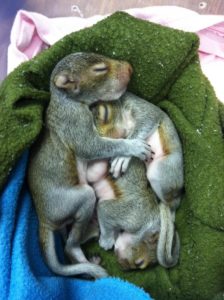
2. You find squirrel babies on the ground after a bad storm, they appear uninjured, what should you do?
a. Take them home so you can raise them yourself.
b. If you can find a tree nearby, look for their nest. If you can’t find a nest, tie a cardboard box with an open top to the tree, hoping their mom will come get them from the box eventually.
3. After spending some time alone in the backyard, your cat approaches you with a baby bunny in its mouth! He puts it down on the floor in front of you, expecting some pats in return for his find. You pick up the bunny and notice he has some blood on him, but you can’t tell where it’s coming from. What should you do next?
a. Bring him to the Wildlife Medical Clinic or your local licensed wildlife rehabilitator for examination as soon as possible.
b. Wash the bunny and put triple antibiotic ointment on him before returning him to the yard.
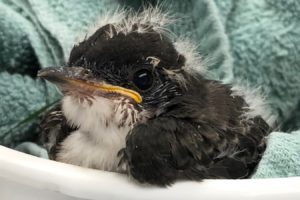 4. During a walk on a warm summer day you see what looks like a small ball of feathers jumping in the grass. When you get closer you see this baby bird. Should you intervene or let him hop along his way?
4. During a walk on a warm summer day you see what looks like a small ball of feathers jumping in the grass. When you get closer you see this baby bird. Should you intervene or let him hop along his way?
a. Pick him up and demonstrate how to fly by jumping off a nearby rock.
b. Let him continue learning to fly on his own, he’s getting close!
5. You’re heading out for work and when you hear a little critter scurry under your porch. Curious, you follow the sound and find 5 baby racoons! They’re huddled closely together, but you notice that they’re extremely thin and not very active. There is no mother racoon around, though you do remember your neighbor saying he trapped and relocated one a couple days ago. What should you do?
a. These babies don’t seem to be in good condition, you carefully avoid being scratched or bitten as you scoop them into a container and bring them to the Wildlife Medical Clinic.
b. Scare them out from under the porch and block their entry point with your trash can. Surely they will be fine if they stick together.
Check your responses:
1. The correct answer was b.
a. If your dog moved any twigs or grass that was covering the nest. The bunny mom only comes by at dawn and at dusk to feed her babies. If there are people or animals nearby, she won’t approach the nest so as to avoid drawing attention to her young. If the nest is in your yard, keep your dog on a leash until the bunnies grow up and leave the nest. In as little as two weeks of age, the bunnies will start to explore outside their nest and they are typically on their own at as young as 4-7 weeks old! You can put a flag or post in the ground near the nest to remind yourself to avoid letting your dog disrupt it or even help you avoid mowing the grass near the nest.
2. The correct answer was b.
a. These are juvenile Eastern grey squirrels. For each species, their mother is the best caretaker. Uninjured baby animals should be placed out of harm’s way in a place their mom can find them. Baby squirrels can sometimes fall out of the nest, but mom is usually quick bring them back up the tree. If the babies appear uninjured and seem active (kicking their legs, possibly vocalizing) put them in an accessible location and wait ~24 hours before bringing them in to a rehabilitation center. Make sure to keep your distance, as your presence near the babies will deter mom from coming to get them. If after 24 hours the mother has not yet retrieved them, bring them to your local wildlife rehabilitator. You can find a list of rehabilitators close to you here.
3. The correct answer was a.
a. Cats are great companions, but their curiosity can sometimes cause trouble. Not only could they injure wildlife, the cats could themselves be injured or even get sick after eating an inappropriate snack. Since the baby is injured, bringing him to the Wildlife Medical Clinic is the appropriate choice. If there are no medical clinics near you that accept wildlife, reach out to your local wildlife rehabilitator for guidance. We do not recommend bathing these animals, as they get cold easily and it could worsen their injuries.
4. The correct answer was b.
a. This bird is a fledgling, a baby bird that is at the age where they are growing in their adult feathers and learning to fly. He looks extra funny, with some of his baby feathers still present and some new feathers growing in. He will continue to play and wander, and his parents will keep feeding him until he is ready to forage for his own. It’s best to leave him alone. These animals only need medical care if they are bleeding or obviously sick; in those cases you can bring them to the Wildlife Medical Clinic for examination.
5. The correct answer was a.
a. In many cases waiting to see if mom returns is an appropriate decision. If you’re sure the animals’ mother is not coming back or the babies seem to be in dangerously poor condition you can bring them to a wildlife rehabilitator or the Wildlife Medical Clinic. Raccoons and other mammals may carry rabies or distemper, so you should always be cautious and avoid being bitten or scratched.

